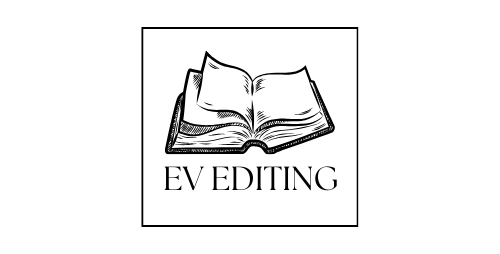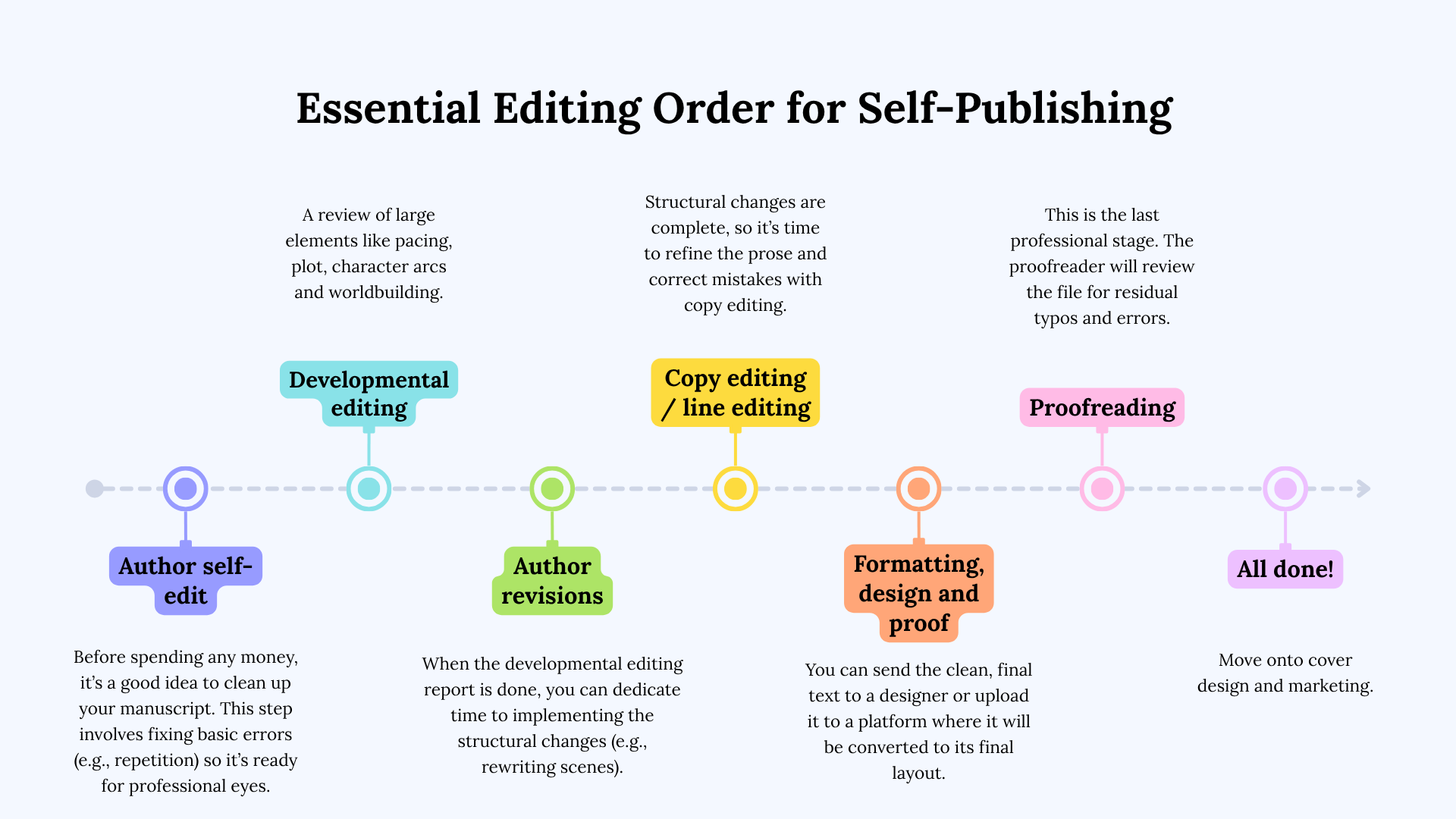Developmental Editing vs. Copy Editing vs. Proofreading: A Self-Publishing Author's Guide
The single most costly mistake a self-published author can make is misunderstanding the editorial pipeline. You've heard terms like developmental editing, copy editing and proofreading, but do you really need all three?
Knowing the difference helps you feel confident that you’re allocating budget correctly and staying on track with your publishing pipeline.
We'll clarify their distinct roles and the crucial order in which self-published speculative fiction authors should book them.
This article covers:
What is developmental editing, and what does it involve?
Do I need developmental editing?
What is copy editing, and do I need it?
Is proofreading different from copy editing and developmental editing?
The Essential Editing Order For Self-Published Novels
First things first, let’s look at what developmental editing is.
What is developmental editing, and what does it involve?
Developmental editing is the architectural phase of the editing process. It focuses entirely on your manuscript's big picture, ensuring the foundational elements of your storytelling align with your vision before anyone polishes the prose. It’s the first professional edit you’ll need.
A developmental editor reviews the structural viability of your manuscript and provides the blueprints for major revisions. This analysis is particularly complex for a speculative fiction novel, as the editor must also stress-test the complex internal logic of your invented world.
Developmental editing services involve:
Plot visibility: Analysing things like the central conflict and cause-and-effect chain to identify plot holes or narrative lags.
Character arcs: Assessing the protagonist's internal and external conflict so their journey feels earned and logical.
Pacing and flow: Evaluating your manuscript’s rhythm and pinpointing areas to amend tension and pacing.
Worldbuilding logic: Testing the internal rules and consistency of your speculative world, including the believability of geography and cultural structures.
Narrative voice: Reviewing whether the tone and structure are consistent throughout the manuscript and appropriate for your chosen subgenre.
Developmental editing is completed after you’ve finished the first draft and self-edits. The structural feedback from a developmental edit can require deep revisions and rewrites before you engage a copy editor.
Do I need developmental editing?
You absolutely need developmental editing if you intend to sell your speculative fiction novel commercially. Think of dev editing as the structural stress test; without it, you risk putting out a book with plot holes and inconsistent character arcs.
As an author, you are highly immersed in your writing. However, this deep connection can mean you become blind to minor mistakes like pacing problems, especially when you’re already juggling so much creativity. A developmental editor provides a fresh perspective and professional analysis of how readers will interpret your work, so you can feel confident that you’re publishing the best version of your novel.
What is copy editing, and do I need it?
Next in the order is copy editing, which comes after developmental editing. Copy editing is all about the quality of your prose. This stage happens when all the structural suggestions flagged during developmental editing have been addressed and implemented.
A copy editor’s job is to make sure your writing is clean and consistent for an immersive reading experience. They work at the sentence level to improve mechanics and continuity, which involves:
Correcting errors: Fixing all errors in spelling, grammar, punctuation, and syntax.
Adherence to style: Ensuring the manuscript follows a professional editorial standard, such as The Chicago Manual of Style (CMOS), for things like capitalisation and number treatment.
Fixing continuity: Checking for minor inconsistencies that break immersion (e.g., a character's name changing mid-scene).
Every self-published speculative fiction writer needs copy editing. Without it, your manuscript will likely have lingering surface-level errors that only a professional could spot.
Is line editing the same as copy editing?
It’s a common self-publishing mistake to bundle line editing with copy editing. Line editing is a dedicated pass focused on the artistry and impact of the prose. A line editor focuses on word choice and sentence rhyme, among other factors. They are looking to tighten clunky phrases and guide you in making descriptive language as powerful as possible.
Is proofreading different from copy editing and developmental editing?
We’ve explored that:
Developmental editing focuses on the big-picture structural viability of your manuscript.
Copy editing is the sentence-level review, looking at the quality of your prose.
Proofreading is the final check performed after your manuscript has been copy edited and formatted. A proofreader looks for isolated and remaining errors, such as:
Missing punctuation
Inconsistent font/spacing
Typographical errors
Residual typos that slipped through the copy edit
All self-published spec fiction authors need to know that proofreading is a totally different stage from copy editing and developmental editing. Each stage is dedicated to a different type of review, helping elevate all aspects of your novel.
The Essential Editing Order For Self-Published Novels
Yes, there is a ‘correct’ order of editing, including author review stages in between. Here’s a breakdown:
Author self-edit: Before spending any money, it’s a good idea to clean up your manuscript. This step involves fixing basic errors (e.g., repetition) so it’s ready for professional eyes.
Developmental editing: A review of large elements like pacing, plot, character arcs and worldbuilding.
Author revisions: When the developmental editing report is done, you can dedicate time to implementing the structural changes (e.g., rewriting scenes).
Copy editing/line editing: Structural changes are complete, so it’s time to refine the prose and correct mistakes with copy editing.
Formatting, design and proof creation: You can send the clean, final text to a designer or upload it to a platform where it will be converted to its final layout.
Proofreading: This is the last professional stage. The proofreader will review the file for residual typos and errors.
Invest in Your Novel’s Potential With Developmental Editing
Developmental editing, copy editing and proofreading are not interchangeable. Each linear stage is unique in the self-publishing process, and following this order is the best way to maximise your budget and get a high-quality outcome.
As we’ve explored, developmental editing is the essential first stage that elevates your manuscript’s plot, characters, worldbuilding and magic systems to their best, complete form. Your speculative fiction novel deserves a meticulous and collaborative developmental editor to provide deep analysis that guides you in creating a commercially viable final product.
Ready to invest in your novel’s potential?
Book a free 15-minute consultation to get started with a dedicated developmental editor.



